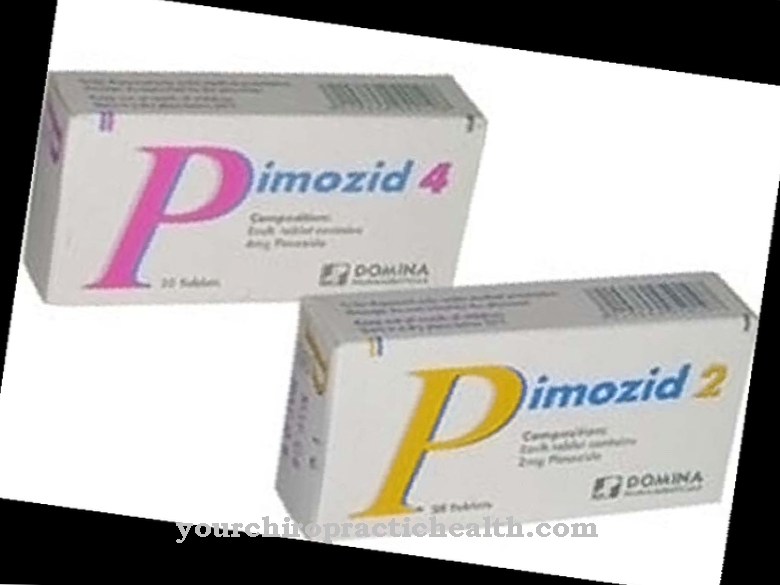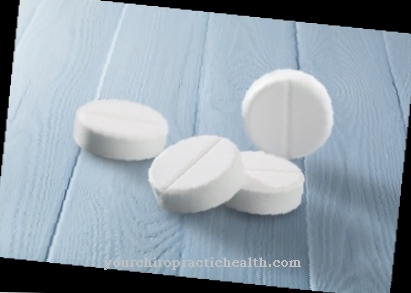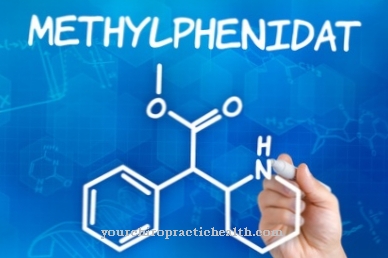Phenylbutazone belongs to the active ingredient group of non-steroidal anti-inflammatory drugs. It is used to treat inflammation, pain and fever.
What is phenylbutazone?

The drug phenylbutazone is used in both human and veterinary medicine. There it is used as a non-steroidal anti-inflammatory drug based on pyrazolone, an organic compound.
Phenylbutazone was developed in 1951 by the Swiss pharmaceutical company Geigy, which now bears the company name Novartis. The active ingredient is suitable for treating pain, inflammation and fever and was the first non-steroidal anti-inflammatory drug that was offered in Germany at the time.
However, a disadvantage of the agent is its pronounced side effects. For this reason, phenylbutazone is now only used for acute rheumatoid arthritis, ankylosing spondylitis and gout attacks.
Pharmacological effect
The main effects of phenylbutazone are its pain relieving and anti-inflammatory properties. The action of the drug is based on the inhibition of prostaglandins. These are tissue hormones that play a major role in causing pain, inflammatory reactions and fever.
Phenylbutazone can block enzymes such as cyclooxygenase 1 and cyclooxygenase 2. These enzymes are essential for prostaglandin synthesis. In this way, phenylbutazone can develop its pain relieving, anti-inflammatory and antipyretic effects.
Phenylbutazone is able to stay in the body for long periods of time. Effective concentrations can be found around three weeks after taking the agent. However, this effect can also cause severe side effects, so that the intake should not take longer than a few days.
When phenylbutazone is administered orally, the drug rapidly enters the blood via the gastrointestinal tract. The substance is broken down into oxyphenbutazone within the liver. This substance also has an anti-inflammatory effect. The breakdown of phenylbutazone from the body takes place via the kidneys, whereby it is excreted in the urine. It takes about 50 to 100 hours for the active substance to be broken down 50 percent from the body.
Medical application & use
Because of its pronounced side effects, the areas of application of phenylbutazone are now limited. The drug is only given for acute attacks of the chronic inflammatory rheumatic disease ankylosing spondylitis, acute rheumatoid arthritis and acute gout attacks.
Another field of application of phenylbutazone is veterinary medicine for the treatment of animals. There the agent is administered intravenously, intramuscularly or orally. Percutaneous solutions and ointments are also used. The drug is used in numerous large and small animal practices. Giving food to animals from which food is supplied is prohibited within the EU. Horses are a frequent field of application of the drug. In equestrian sports, however, phenylbutazone is also an inadmissible doping agent.
Human patients are given phenylbutazone with suppositories, coated tablets, tablets and injection solutions. The doctor in charge determines the dose. The recommended starting dose is 600 milligrams of phenylbutazone, while the maintenance dose must not exceed 400 mg per day. In principle, phenylbutazone should only be administered for a short time.
You can find your medication here
➔ Medicines for fever and chillsRisks & side effects
Numerous side effects can occur with the use of phenylbutazone. Around 20 to 30 percent of patients suffer from undesirable side effects. Most of the time, the symptoms are diarrhea, nausea, black stools, severe pain in the upper abdomen, unnoticed loss of blood, rash and itching of the skin.
Tiredness, dizziness, sleep disorders, headaches, nervousness, declining liver values, hepatitis, bile congestion and the formation of edema are also possible.
The rarely occurring side effects include gastrointestinal ulcers, allergic reactions such as asthma attacks, bleeding, anemia (anemia), blood formation disorders associated with fever, flu-like symptoms, sore throat, skin bleeding, inflamed oral mucosa, nosebleeds and kidney and pancreas and liver dysfunction. In addition, hypersensitivity reactions may occur that require immediate medical attention.
It is not suitable to take phenylbutazone if the patient suffers from a stomach or intestinal ulcer. If you have an inflammatory bowel disease such as ulcerative colitis or Crohn's disease, consultation with a doctor is necessary. In addition, the drug should be avoided if there are blood formation disorders such as porphyria. The same applies if the patient is already bleeding.
Phenylbutazone must not be used during pregnancy. If the agent is used during this period, the scientific studies are not yet sufficient to rule out serious side effects on the embryo. Animal experiments showed evidence of malformations. The long dwell time of the drug is also considered counterproductive. In the last trimester of pregnancy, there is a risk that phenylbutazone will inhibit labor and cause complications during childbirth.
Taking phenylbutazone during breastfeeding is also not recommended, as small amounts of the active ingredient can pass into breast milk. The drug is also not suitable for children.
The simultaneous administration of phenylbutazone and other medicinal products may cause interactions. For example, the parallel administration of the non-steroidal anti-inflammatory drug and other anti-inflammatory preparations, such as glucocorticoids, can increase the risk of side effects in the gastrointestinal tract.
Certain drugs also weaken the positive effects of phenylbutazone. These include the antibiotic rifampicin, the cholesterol-lowering drug colestyramine, the barbiturate phenobarbital, the neuroleptic promethazine and the antiallergic agent chlorphenamine.
On the other hand, phenylbutazone can in turn increase the effects of diabetes drugs, insulin and anticoagulants (anti-coagulants). The drug also affects the excretion of methotrexate from the body.



























